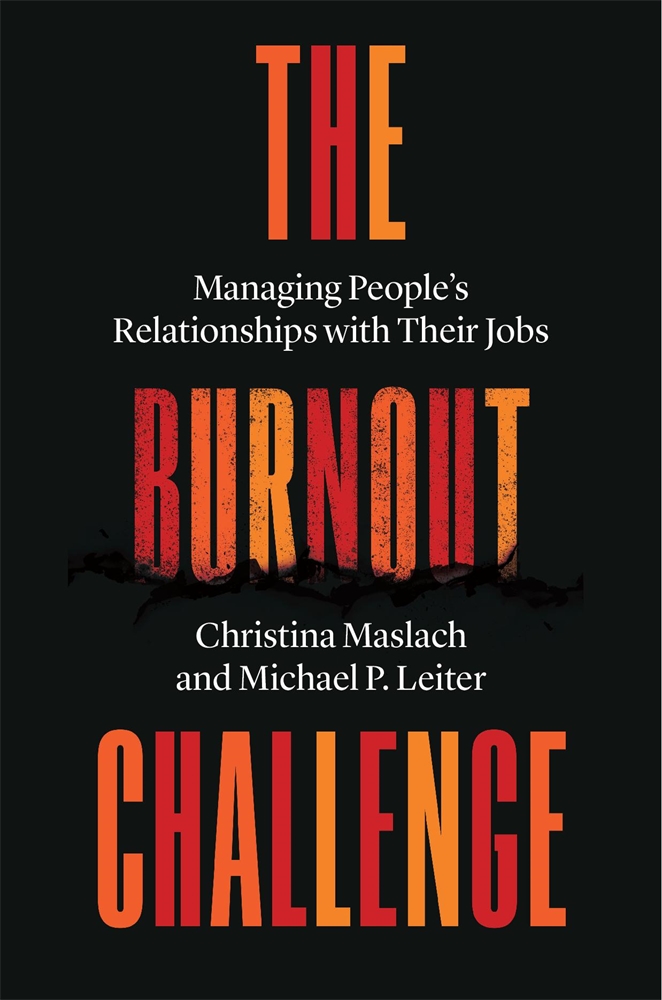I hear about burnout all the time. What is it exactly and why is it important?
Burnout is an experience in response to chronic workplace stressors that have not been successfully managed. It includes the basic stress response of exhaustion, but it goes beyond that to include increased cynicism and mental distance from one’s job, and a reduced sense of one’s professional effectiveness.
The burnout experience reflects a mismatch between people and their job:
1. Exhaustion means that there is too much work for people to do well, and they are not recovering from trying to meet those demands.
2. Cynicism is a negative attitude about how the workplace is failing to address the chronic job stressors, and a withdrawal from the job by doing the bare minimum rather than one’s very best.
3. Ineffectiveness refers to negative feelings about one’s accomplishments on the job, including low self-esteem and possibly depression or anxiety, and not knowing where to go to get good advice or help or support.
As a result, burnout can lead to poor job performance, absenteeism, and turnover, as well as to employee health problems. For the organization, this means the potential loss of good employees (a poor return on the investment in hiring them), the high costs of replacement for turnover, and difficulty in attracting new employees.
What is needed are efforts to improve the match between people and their job, so that employees can thrive rather than get beaten down.
Is burnout considered a personal medical illness, that needs to be diagnosed and treated?
No, burnout itself is not a medical condition, nor is it a sign of a worker’s weakness or incompetence. Rather, it reflects the fact that it is harder for people to recover from chronic job stressors, which are high frequency and ongoing – in other words, stressors that are present in the workplace most of the time. The view that burnout is simply a personal problem misses the relationship between the worker and the workplace conditions and makes the mistake of stigmatizing and “blaming the victim.”
Usually when we hear about Burnout it is about how we need to practice more self-care, take that vacation, and turn off email at night. Is that how you see it?
No, that is not how we see it. The incorrect underlying assumption there is that burnout is simply a personal problem, and therefore only the person is responsible for solving it. Such recommendations usually involve techniques to cope with the chronic job stressors – but that does not actually change the stressors themselves. Techniques to prevent burnout have to focus on successful management of those stressors, by modifying, reducing, or eliminating their chronic presence, so that there is a better match between the workers and the workplace. Social-organizational care is required, not simply self-care.
Why is the relationship between people and their jobs a better way to understand burnout?
First, it reframes the question from who is burning out to why they are burning out. It is not enough to simply focus on the worker who is having a problem — there has to be a recognition of the surrounding job conditions that are the sources of that problem. The analogy that we use in our book is that of the canary in the coal mine. When the canary begins to have trouble breathing, it is a signal that the mine has too high a level of toxic fumes – and the solution is to alleviate that hazardous condition (rather than to make the canary tougher and more resilient). In a similar way, burnout is a signal that workers are struggling with chronically stressful job conditions. The goal should be to alleviate those conditions so that there is a better match between people and their jobs, and thus they can thrive and do well.
Second, improving the job-person relationship can have positive benefits for all employees, and not simply those who have experienced burnout. Recent Gallup polls report that only 21% of employees worldwide “are engaged with work” – which means that the vast majority of workers are having less than wonderful experiences on the job. A rising tide of better job-person matches could potentially lift all employee boats. In our book, we talk not only about burnout and its positive opposite of engagement, but about other work experiences, such as overextended (feeling exhausted from a heavy workload, but still feeling OK about both the job and oneself) or disengaged (very cynical about the job and doing “quiet quitting”), or ineffective (feeling negative about one’s job accomplishments, even if the workplace seems OK).



